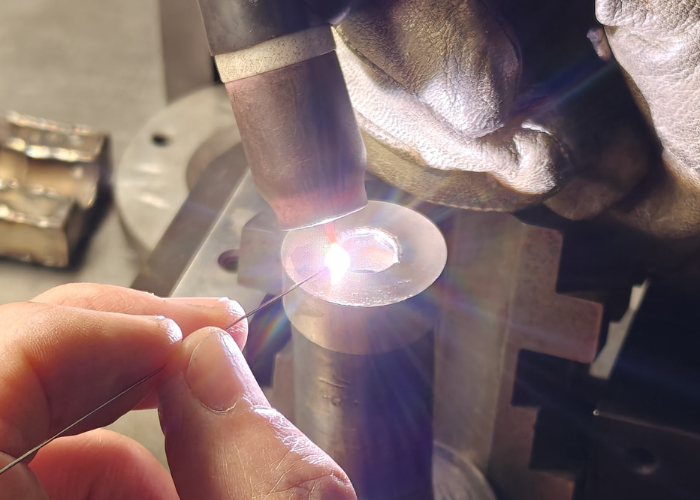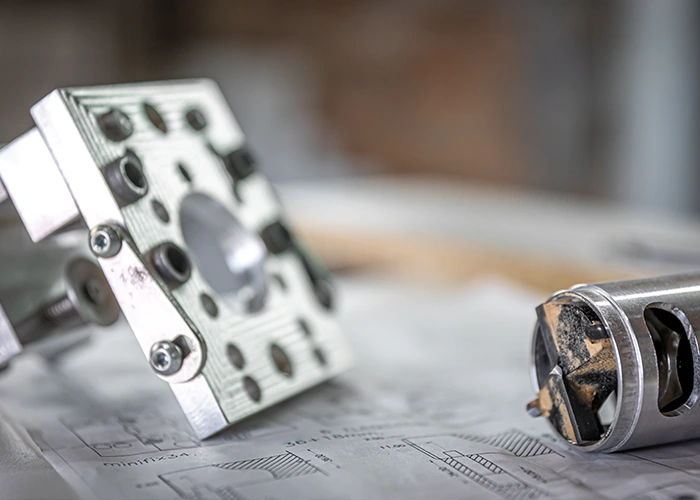One stop shopping for all of your mold REPAIR needs.
Plastic injection molding is a vital process for manufacturing various products, from automotive components to medical devices. To ensure the longevity and efficiency of this process, proper maintenance and timely repair of the plastic injection molds are essential.
Why is Mold Repair and Maintenance Important?
Quality mold repair and maintenance offers numerous benefits:
- Enhanced Product Quality: Well-maintained molds produce consistent, high-quality parts with minimal defects.
- Increased Production Efficiency: Prevents costly downtime caused by mold failures and ensures smooth, uninterrupted production runs.
- Extended Mold Lifespan: Regular maintenance significantly prolongs the life of your molds, maximizing your return on investment.
- Reduced Costs: Proactive maintenance and timely repairs are more cost-effective than replacing damaged or worn-out molds.
- Improved Safety: Prevents catastrophic mold failures that can pose safety hazards to personnel.


Welding Mold Repair New Tooling
Our vastly experienced team of mold makers is ready to tackle any job, large or small.
Quality craftsmanship, a quick turn around, competitive prices, and a high level of customer service is what our customers have come to expect from us.
Services
Our Full Service Shop

Mold repair/Revisions

In-House Welding

Replacement Components

In-House New Mold Build

Overseas Outsourcing of New Molds with Complete Project Management
Let our Mold Doctors take care of all your “Mold Injuries”
Types of Damage to Injection Molds Requiring Repair
Injection molds are robust, but they’re not invincible. Intense pressures, temperatures, and repetitive use they endure can lead to various issues that require repair. Here are some common problems:
- Wear and Tear:
- Erosion: The constant flow of molten plastic can gradually erode the mold cavity, leading to surface imperfections and dimensional inaccuracies in the finished parts.
- Galling: This is a form of wear caused by friction between moving parts, such as ejector pins and slides. It can result in sticking, damage, and premature failure.
- Corrosion: Exposure to moisture, chemicals, and certain types of plastic can cause corrosion on mold surfaces, particularly in intricate cooling channels.
- Damage:
- Cracks: Sudden temperature changes, excessive injection pressure, or improper handling can lead to cracks in the mold.
- Chips and dents: Accidental impacts or mishandling can cause chips and dents on the mold surface, affecting the quality of the finished parts.
- Ejector pin damage: Ejector pins can bend, break, or become stuck due to wear, improper setup, or obstructions.
- Cooling Channel Issues:
- Blockages: Mineral deposits, rust, or debris can accumulate in the cooling channels, hindering heat dissipation and leading to uneven cooling and part defects.
- Leaks: Corrosion or damage can cause leaks in the cooling channels, reducing cooling efficiency and potentially damaging the mold or surrounding equipment.
- Venting Problems:
- Clogged vents: Inadequate venting can trap air within the mold cavity, resulting in burn marks, short shots, or incomplete filling.
- Vent damage: Vents can become damaged or blocked due to plastic buildup, impacting the quality of the finished parts.
- General Degradation:
- Flashing: This occurs when molten plastic escapes the mold cavity, indicating wear or misalignment.
- Dimensional inaccuracies: Wear and tear can lead to dimensional changes in the mold, resulting in parts that don’t meet specifications.
- Surface imperfections: Scratches, pitting, or other surface defects can affect the aesthetics and functionality of the finished parts.
How to Know When Your Injection Mold May Need Repair or Maintenance
Knowing when a plastic injection mold needs repair involves monitoring its performance and looking for signs of wear, damage, or defects that affect the quality of the molded parts. Here are some key indicators:
- Part Quality Issues:
- Short shots where parts are ejected with incomplete fills
- Burrs and flashing caused when excess plastic seeps into gaps in the mold
- Flow marks caused by uneven injection speed or cooling
- Blistering, stress cracks, and burn marks brought on by prolonged exposure to high temperatures
- Drag marks caused by a misaligned ejector system
- Voids or depressions from non-uniform heating or cooling of materials
- Contaminants from breakdowns in the mold
- Color streaks or discoloration that arise when mixing is not uniform, or a failure to properly flush the hopper and feeder
- Visual Mold Damage:
- Increased Cycle Time:
- Ejection Problems:
- Unusual Sounds or Resistance:
- Dimensional Inconsistencies:
- Maintenance Schedule:
- Material or Process Changes:
If the molded parts start showing defects like flash (excess material leaking out), sink marks, warping, short shots (incomplete fills), or burn marks, it could signal mold damage, wear, or misalignment.Mold damage, wear, or misalignment may be indicated by defects in molded parts, such as flash, sink marks, warping, short shots, or burn marks.
Inspect the mold for physical signs like cracks, scratches, dents, or erosion on the mold surface, especially in high-wear areas like gates, runners, or cavities. Corrosion from aggressive plastics or poor maintenance can also be a clue.
If the mold takes longer to produce parts than usual, it might mean cooling lines are clogged, ejector pins are sticking, or the mold isn’t closing properly due to wear or debris buildup.
Parts sticking to the mold, damaged ejector pins, or inconsistent ejection can indicate wear or mechanical issues in the mold’s ejection system.
Grinding, scraping, or other odd noises during operation, or difficulty in mold opening/closing, suggest misalignment, worn components, or inadequate lubrication.
If parts no longer meet tolerances (e.g., too thick, too thin, or uneven), the mold might have worn cavities, damaged parting lines, or issues with clamping pressure.
Even without obvious problems, molds have a finite lifespan (measured in shots, often 100,000 to 1,000,000+ depending on material and design). Regular inspection based on shot count or runtime can catch wear before it fails.
If you switch to a more abrasive or corrosive plastic (e.g., glass-filled polymers), or if process parameters like temperature or pressure shift outside norms, the mold may degrade faster and need repair sooner.